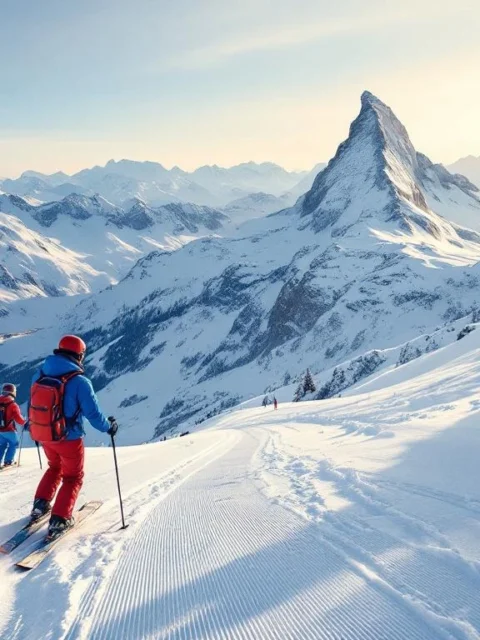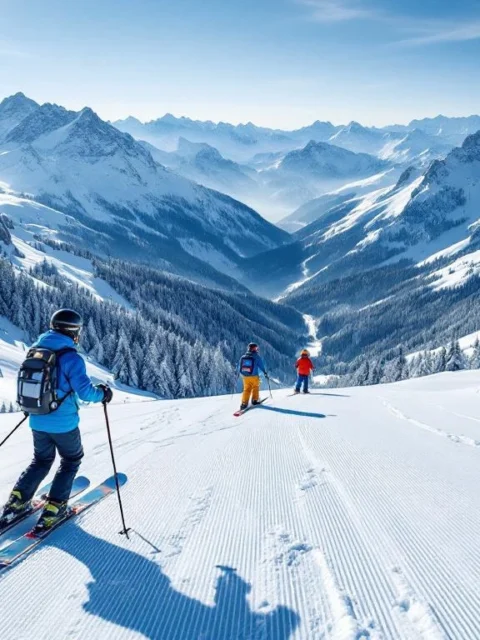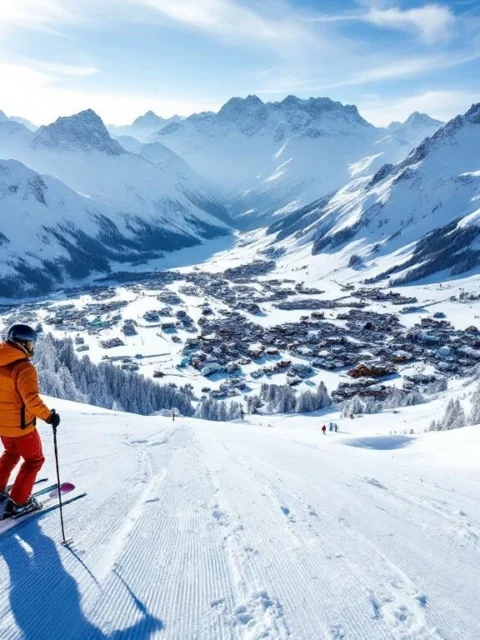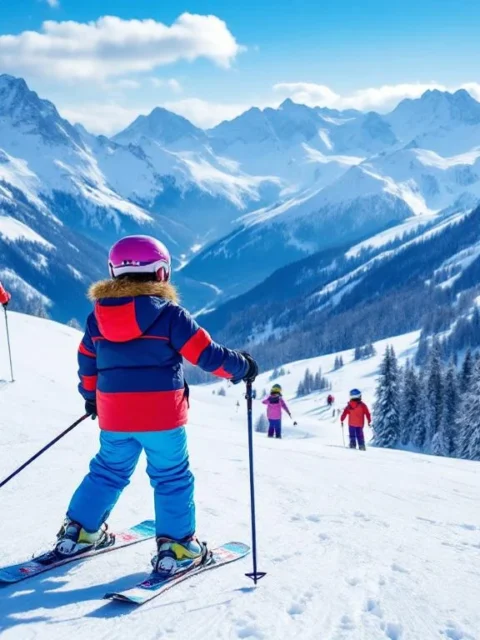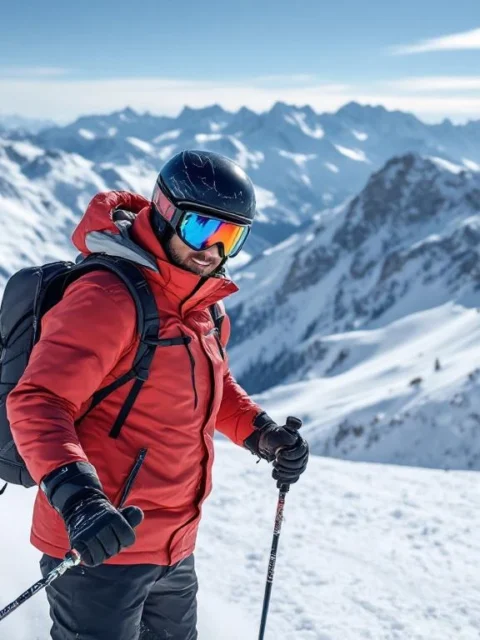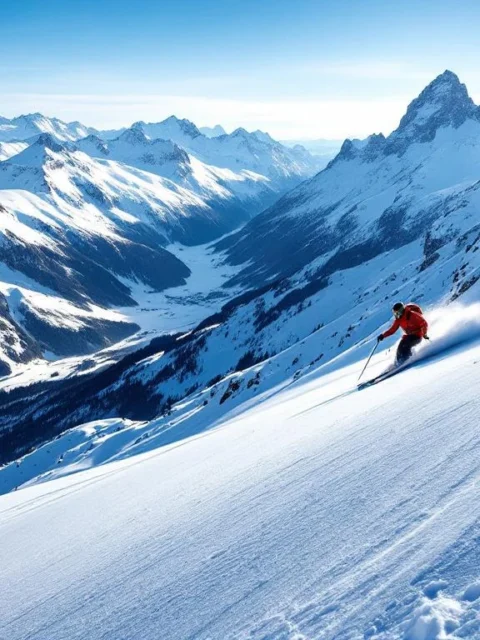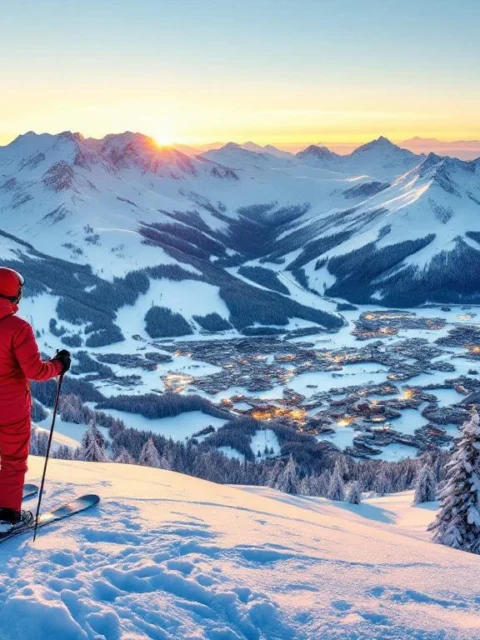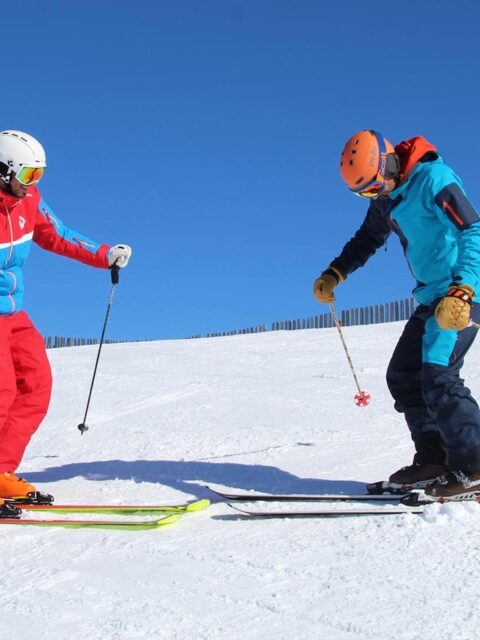How do you progress from beginner to intermediate skier?

Ah, that first descent on the green slope! What a feeling, right? The fresh mountain air, the adrenaline, and those first successful turns. But what if you’re ready for the next step? The jump from beginner to intermediate skier is one of the most satisfying phases in your skiing career. In this guide, we share everything you need to make that jump with confidence – from the right lessons to equipment and exercises that help you progress faster. Grab your ski poles, because we’re going to help you conquer that next slope!
The Right Ski Lesson for Your Level
When you’re confidently descending those first green slopes, you might be ready for the next step in your skiing adventure. The right instruction at this moment can make the difference between weeks or months of progression.
As a beginning skier, you’ve probably already taken group lessons. These are great for learning the basics, but once you want to progress to the intermediate level, it’s smart to look at other forms of instruction:
- Semi-private lessons – With 2-4 people, you get more personal attention than in a large group, but you share the costs. Perfect for those who want to improve specific techniques.
- Private lessons – More expensive, but unmatched in effectiveness. A private instructor sees exactly what you need and can improve your technique incredibly quickly.
- Specialized clinics – Many ski schools offer special lessons for the transition to intermediate, where you specifically work on parallel turns, carving, and different snow conditions.
It’s important to find an instructor who understands your learning style. Some people learn visually (by demonstration), others auditorily (by explanation) or kinesthetically (by feeling and experiencing). A good instructor adapts their method to your learning style.
How often you take lessons depends on your ambitions and available time. For many skiers, it works well to take lessons during the first days of their vacation and then practice what they’ve learned on their own. This way you can compare different types of ski lessons and choose the best option for your situation.
Common Mistakes Made by Beginning Skiers
Every ski instructor will tell you that there are certain mistakes almost all beginning skiers make. Recognizing and correcting these mistakes is often the key to faster progress.
The most common technical obstacles are:
- Leaning backward – Perhaps the number one mistake! If you’re afraid of speed, it’s natural to lean backward. But this actually gives you less control. Try to lean slightly forward, with your shins against the front of your ski boots.
- Too much weight on the inside ski – For stable turns, you need to apply pressure to the outside ski. Beginning skiers often put too much weight on the inside ski, which leads to instability.
- Stiff legs – Skis are designed to bend and turn. But they can only do this if your knees are bent and working with them. Stiff, straight legs make your skis uncontrollable.
- Not using arms and upper body – Your entire body contributes to a good turn, not just your legs. Your arms and shoulders should indicate the direction.
- Wanting to go too fast – Many beginning skiers want to move to steeper slopes too quickly, before their technique is ready. This leads to fear and bad habits that are difficult to unlearn later.
Know what’s reassuring? Almost every skier makes these mistakes at the beginning. Recognizing these patterns is the first step toward improvement. A video analysis during a lesson can be super useful – sometimes we’re not even aware of what we’re doing wrong!
Effective Exercises for Faster Progress
Now that you know which mistakes to avoid, it’s time for concrete exercises that help improve your technique. You can use these during your own ski sessions, between lessons.
For better balance and weight distribution:
- Skiing on one leg – During calm sections, slightly lift one ski and ski 10-20 meters on just your other ski. Then switch legs. This trains your balance and teaches you to trust your outside ski.
- Hands on knees – Place your hands directly on your knees while skiing. This forces you to lean forward and actively steer with your knees.
- Ski poles under your arms – Tuck your ski poles horizontally under your armpits. This prevents you from swinging your arms and helps maintain a stable position.
For better turning technique:
- Large-small turns – Consciously alternate between very wide and very tight turns. This develops your feel for the different pressure you need to apply.
- Short swings – Practice short, rhythmic swings on a quiet, not too steep slope. Focus on quickly changing sides.
- Hockey stop – Practice abruptly stopping by turning your skis perpendicular to the slope. This improves your feel for the edges of your skis.
The secret to these exercises is repetition and focus. Choose one or two per ski day and consciously dedicate time to them. It’s better to work in a concentrated way on one skill for 30 minutes than to ski all day without focus.
Try skiing with someone who is slightly better than you. Following their example can help you develop new movement patterns without having to think consciously about them.
When Are You Ready for Blue and Red Slopes?
The transition to steeper slopes is exciting, but how do you know when you’re ready? There are some clear signals that indicate you’re technically and mentally prepared for the next challenge:
You’re ready for blue slopes when:
- You can comfortably make parallel turns on green slopes
- You can control your speed without snowplowing
- You can easily stop when necessary
- You’re relaxed on the green slope and no longer need to constantly focus on your technique
- You can make multiple descents in a row without extreme fatigue
You’re ready for red slopes when:
- You descend blue slopes with confidence and control
- You master different types of turns (short and long)
- You can handle different snow conditions (including heavier or uneven snow)
- You’re comfortable with higher speeds
- You can carve on blue slopes without great effort
Important to remember: it’s not just a matter of technical skills, but also mental preparation. If you’re afraid on a steeper slope, your technique will deteriorate. Therefore, build up gradually. First look for the easier blue slopes (not all blue slopes are equally steep) and work from there.
Also know that it’s perfectly fine to have a transition phase where you snowplow at the beginning of a blue slope and later in the descent switch to parallel turns. This way you build confidence step by step.
Equipment That Supports Your Progress
The right equipment can accelerate your progress, while wrong equipment can actually hinder your development. Let’s look at what works best for skiers transitioning from beginner to intermediate.
Ski boots: Perhaps the most important equipment for your development! Boots that are too soft provide insufficient control for intermediate skiing. At the same time, boots that are too stiff can be painful and hinder your technique.
Look for boots with:
- A flex index of about 70-90 for men and 60-80 for women progressing to intermediate
- A good fit without pressure points (pain leads to poor technique!)
- Sufficient ankle support to transfer more precise movements to your skis
Consider buying ski boots, even if you still rent other equipment. The consistency of using the same boots greatly accelerates your learning process.
Clothing: Don’t underestimate how important comfortable, warm, and dry clothing is for your progression. If you’re cold or wet, you’ll stiffen up and it becomes harder to apply the right technique. Invest in good base layers and a waterproof outer layer.
You don’t need to have the most expensive equipment, but make sure your gear matches your current level AND the direction in which you’re developing. Many rental locations offer specific packages for skiers making the transition from beginner to intermediate.
Conclusion: Your Next Steps Toward Intermediate Skiing
The journey from beginner to intermediate skier is one of the most satisfying phases in learning to ski. You move from basic skills to real control and freedom on the slope. With the right lessons, focus on technique, targeted exercises, and appropriate equipment, you can make this jump much faster than you might think.
The most important thing is consistency and maintaining enjoyment in the process. Skiing is a sport you can practice and improve throughout your life, so take the time to appreciate each phase.
At Ski-Pro, we share your passion for progress on the slopes. Whether you’re looking for the perfect ski lesson to take you to the next level or need advice on which type of lesson best suits your learning style, we’re here for you. Because ultimately, it’s about you conquering the mountains with more enjoyment and confidence!
Frequently Asked Questions
How often should I ski to REALLY make progress as a beginning skier?
Consistency is more important than frequency. Ideally, you ski at least 5-7 days per season to make real progress. Even better is a 'block' of consecutive days (for example, a week's vacation) where you can immediately repeat and anchor newly learned techniques. If you can only ski once a year, consider taking lessons the first two days to quickly get back into the right pattern.
What should I do if I'm stuck in my technique and not progressing?
A technical plateau is normal and can have various causes. It often helps to: 1) Have a video analysis done by an instructor to discover blind spots in your technique, 2) Vary your practice terrain - try different slopes and snow conditions, 3) Focus on one specific aspect of your technique per day instead of trying to improve everything at once. Sometimes one private lesson is enough to break through such a plateau.
How do I mentally prepare for steeper slopes that still intimidate me?
Mental blocks are normal when building skiing skills. Start by exploring the slope first by walking down it or slowly descending along the side. Visualize yourself skiing successfully before you begin. Break the descent into small, manageable sections and take breaks. Ski with someone you trust who is slightly better than you. And remember: it's completely acceptable to go back to an easier slope if you don't feel comfortable.
What specific muscle exercises can I do at home to be better prepared for skiing?
Focus on four core areas: leg strength, core stability, balance, and endurance. Effective exercises are squats and lunges for quadriceps, planks and side planks for core stability, and one-leg balance exercises (possibly on a cushion or BOSU ball). For endurance, interval training like HIIT helps. Ideally start 6-8 weeks before your ski vacation with 2-3 sessions per week to be optimally prepared.
When should I invest in my own ski equipment instead of renting?
Consider purchasing your own equipment when you ski at least 1-2 weeks per year and are comfortable on blue slopes. Start by buying ski boots - this has the biggest impact on your performance and comfort. For skis: if you consistently ski the same type of terrain and your technique is stable, your own equipment can accelerate your progression. But continue renting if you're still making rapid progress (you'll then regularly need different equipment) or if you ski less than 7 days per year.
How do I find the right ski instructor who matches my learning style?
Start by researching the ski school's specializations - some are better at guiding the beginner-to-intermediate transition than others. Specifically ask for instructors who have experience with your learning style (visual, auditory, or kinesthetic). Don't hesitate to switch instructors after a first lesson if there's no connection; a good match between learning style and instruction style can enormously accelerate your progression. Many ski schools now also offer profiles of their instructors online.
What are the first signs that my technique is really improving to intermediate level?
Watch for these positive signals: you feel comfortable at higher speeds without fear, your carving movements come naturally without conscious thought, you can effortlessly switch between different turn radii, you're less tired at the end of the day, and others comment on your improved style. You might also notice that you can increasingly ski behind friends who were previously too fast for you - a clear sign of progression!


